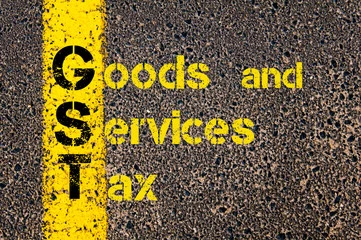Actually revenue collection is one of the most strongest and fiercely fought area between the Centre and the States and the reason for this goes way back before the Constitution was enacted.
In 1935, the Government of India Act which was a precursor to the Constitution which we have today provided a model in which both the Union and the provinces were given separate rights to tax. The Union was given certain rights to tax on certain subjects and similarly the States also had certain rights.
That model was continued even in the Constitution. Therefore, for eg. the Union had the right to tax on manufacture of goods which was called as Excise Duties and similarly the States had the right to tax sale of goods which was earlier called as Sales Tax and later it was called as Value Added Tax. Similarly the States had the right to collect sales tax which was later called as Value Added Tax.
Now, this ensured that both the Centre and the States had their proper revenue collection mechanism which also meant that they were autonomous in their own sphere. They could collect taxes the way they want and they could spend the taxes the way they wanted.
However, this was to change fundamentally on account of GST. The reason being, that GST being a harmonised tax, it was required that both the Centre and the States have common principles for revenue collection, common rules for revenue collection and most importantly, it was implemented in the same manner as it was to be collected by the Centre and by the States. And most importantly, it was to be collected in a uniform manner both by the Centre and the States. Now this required that both of them converge on the same platform and have common rules. Commonality of the rules were agreed.
However, the States were afraid that there might be certain loss of revenue because when GST was formulated, it was formulated with a larger picture. For eg. there are certain issues which are regional, which are not national.
Take for eg. sugar, take for eg. sugarcane, now these are subjects which are not uniform across the country may be a couple, or may be a certain more States may be affected by it but the other States are not affected.
Therefore, how do you take into account regional priorities and more importantly how do you factor it into a larger whole of GST.
Therefore, it was agreed at the Empowered Committee of State Finance Ministers that GST will be a dual tax. Now, dual tax means that every GST will have two components, there will be one component for the Centre, which will be called as Centre GST there will be another component which is called as State GST.
Now, this actually means that in every transaction on which GST is levied, there is actually two taxes which are being imposed namely, Centre GST and the State GST.
So the answer to this short question that who collects GST is actually a larger one, which is that both the Centre and States collect the GST at the same time. This might change however, when it comes to inter-state supplies or international supplies in that scenario the Parliament has empowered the Union to collect IGST which is actually an amalgam of both the Centre GST and the State GST.
So, if you total the State GST and the Centre GST the rate of tax will come equivalent to IGST and it is also ultimately distributed between the Centre and the States.
So even in the case of an inter-state supply or an international supply there are still two taxes being collected. Just that it is being collected by the Union and thereafter distributed to the States.

